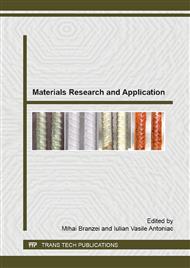p.22
p.29
p.38
p.44
p.50
p.56
p.62
p.68
p.76
Improvement of the Magnetic Properties of Silicon Iron Alloys through Laser Irradiation and Thermal Treatments
Abstract:
We report an investigation on the improvement of magnetic properties in crystalline silicon iron alloys. It was studied the influence of three thermal treatments on the energy losses of non-oriented silicon iron (NO FeSi) sheets, M800-65A industrial grade, at two peak magnetic polarizations 0.5 T and 1 T. First treatment was done at 200 °C for 60 minutes, the second treatment at 550 °C for 30 minutes and the third treatment at 700 °C for 10 minutes. In the case of grain-oriented silicon iron (GO FeSi) sheets, 30Z140 industrial grade, was analyzed the influence of laser scratching on the magnetic properties at peak magnetic polarization 0.25 T. In the case of both steel grades is presented the reduction of the hysteresis, classical and excess losses, that occur after the applied treatments, using the concept of energy loss separation.
Info:
Periodical:
Pages:
50-55
Citation:
Online since:
July 2015
Authors:
Keywords:
Price:
Сopyright:
© 2015 Trans Tech Publications Ltd. All Rights Reserved
Share:
Citation:


